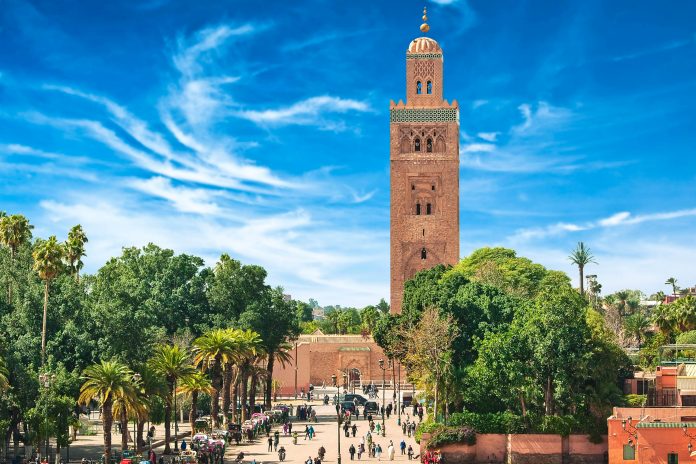Die Medina von Marrakesch zeigt die marokkanische Stadt von ihrer lebhaftesten und ursprünglichsten Seite. In den vielfältigen Souks kann die Seele Marokkos bestaunt, erschnüffelt und gekostet werden.
Die Stadt Marrakesch liegt im Südwesten von Marokko am Fuß der Gebirgskette des Hohen Atlas. Sie ist neben Fes, Meknès und Rabat eine der vier marokkanischen Königsstädte. Die Medina von Marrakesch, wie die Altstadt in vielen arabischen Ländern genannt wird, zählt zum UNESCO-Weltkulturerbe.
Marrakesch und seine Medina ist für jeden Marokko-Reisenden ein absolutes Muss. Nirgendwo sonst ist die exotische Atmosphäre aus 1001 Nacht so authentisch zu erleben wie in den engen, verwinkelten Gassen und auf den bunten Märkten (Souqs) von Marrakesch.
Inhaltsverzeichnis
BILDER: Medina von Marrakesch, Marokko
Fotogalerie: Medina (Altstadt) von Marrakesch
Geschichte von Marrakesch in aller Kürze
Die „rote Stadt“, so genannt wegen ihrer heute 20km langen roten Stadtmauern aus dem Jahr 1126, wurde im Jahr 1071 von den Almoraviden gegründet. Sie war einst die Hauptstadt Marokkos und ist heute noch die Lieblingsstadt des Königs. Sein Erscheinungsbild ist ein wunderbares Beispiel für die mittelalterliche Architektur einer islamischen Stadt.
Einige historische Monumente, wie zum Beispiel die Ruinen der Abou Bekr Kasbah, der Youssef ben Tachfin-Moschee und des Ali ben Youssef-Palastes stammen noch aus dem 11. Jahrhundert. Von Mitte des 12. bis Mitte des 13. Jahrhunderts war Marrakesch nach ihrer Eroberung Landeshauptstadt unter den Almohaden, die Marrakesch zu Reichtum und Wohlstand führten.
Aus dieser Zeit stammen ein Großteil der Stadtmauer, die Moschee, der Palast, der Souq, die Tensift-Brücke, das Krankenhaus und die Gärten von Marrakesch, Menara und Agdal, die ebenfalls zum UNESCO-Weltkulturerbe zählen. Unter den Mereniden begann die Stadt zu verfallen, erst die Saaditen führten Marrakesch im 16. Jahrhundert wieder zur Blüte. Einige der schönsten Bauten in der Medina von Marrakesch, wie die Medresa Ben Yussef oder die Saaditengräber, stammen aus dieser Periode.
Sehenswürdigkeiten der Medina von Marrakesch
Ein Rundgang durch die farbenprächtige Medina von Marrakesch erfolgt am besten zu Fuß und kann gefahrlos auch ohne Führer durchgeführt werden. In dem exotischen Labyrinth aus kleinen Gassen kann man sich leicht verirren.
Koutoubia-Moschee
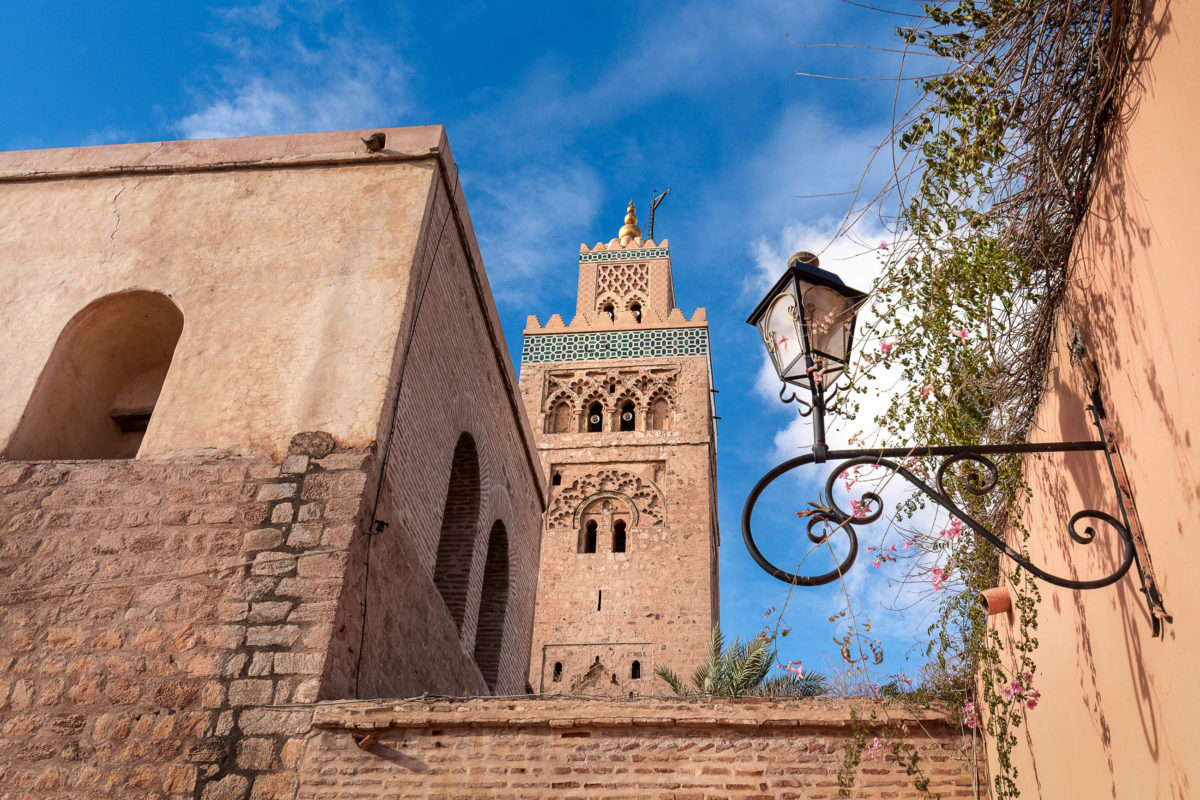
Etwas Orientierung verschafft die große Hauptgasse und das 77m hohe Minarett der Koutoubia-Moschee aus dem mittleren 12. Jahrhundert, das weit über die Dächer von Marrakesch aufragt und noch heute als Wahrzeichen der Stadt gilt. Es befindet sich südlichen Teil der Medina von Marrakesch. Die Moschee selbst darf von Nicht-Muslimen leider nicht betreten werden.
Dar el-Glaoui Palast
Im Norden der Medina ist der Dar el-Glaoui Palast zu finden, in der einst der Pascha von Marrakesch residierte. Teilweise ist er für Touristen geöffnet.
Koranschule Medresa Ben Yussef
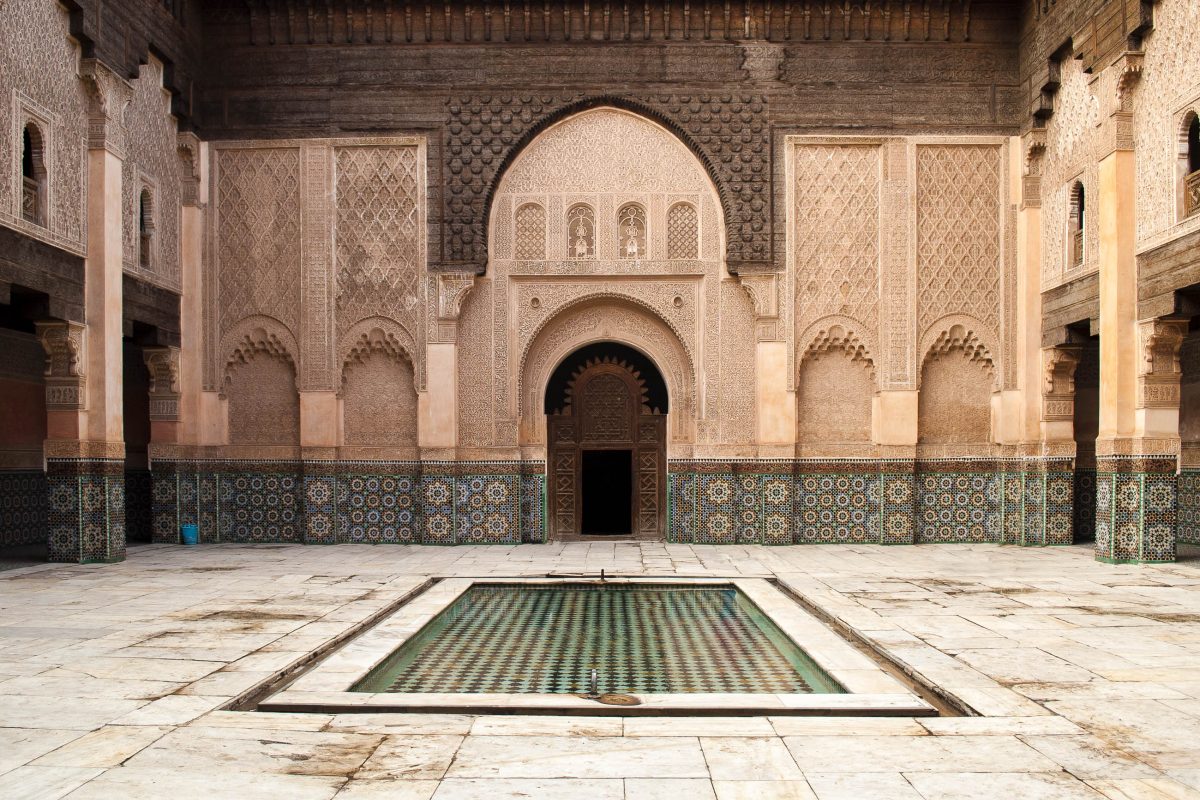
Ebenfalls zu besichtigen sind die ehemalige Koranschule, die Medresa Ben Yussef mit ihrem wunderbaren Innenhof und weitläufigen Grundmauern des ehemaligen Palastes El Badi, in denen heute Störche nisten.
Saaditengräber
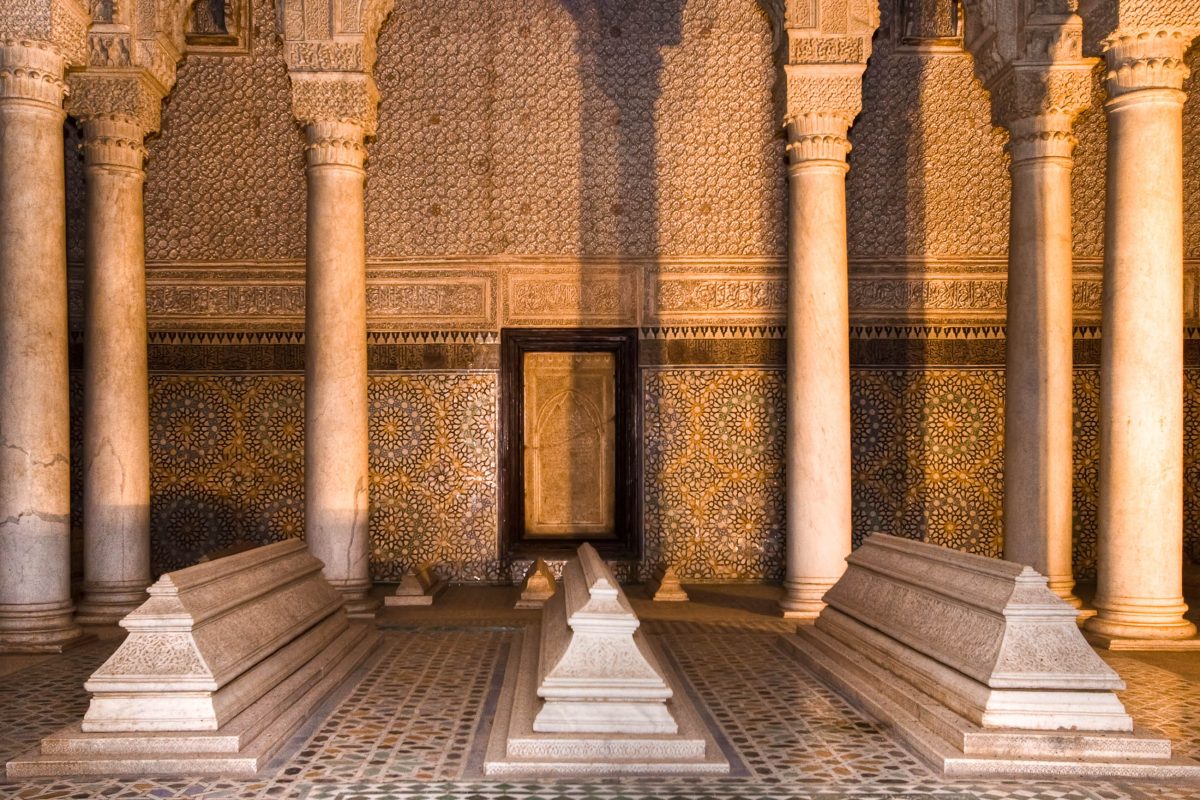
Ebenso wie das heutige Erscheinungsbild der Ben Youssef Madresa stammen auch die kunstvollen Saaditen-Gräber aus der Herrschaftszeit der Mereniden. Sie zählen zu den schönsten Beispielen islamischer Baukunst. Sehenswert ist vor allem die Halle der zwölf Säulen mit prachtvollen Kachelmustern und Zedernholzschnitzereien. Die Saaditengräber sind am besten morgens oder abends zu besichtigen, um den Warteschlangen zu entgehen.
Dar Chérifa
Das älteste Haus der Medina von Marrakesch, das Dar Chérifa wurde nach alter Tradition renoviert und fungiert heute als Literaten- und Künstlertreffpunkt. Im zweiten Stock befindet sich ein Café und laufend finden Lesungen, Ausstellungen, Mal- oder Kochkurse statt.
Djemaa el-Fna – Der Platz der Geköpften
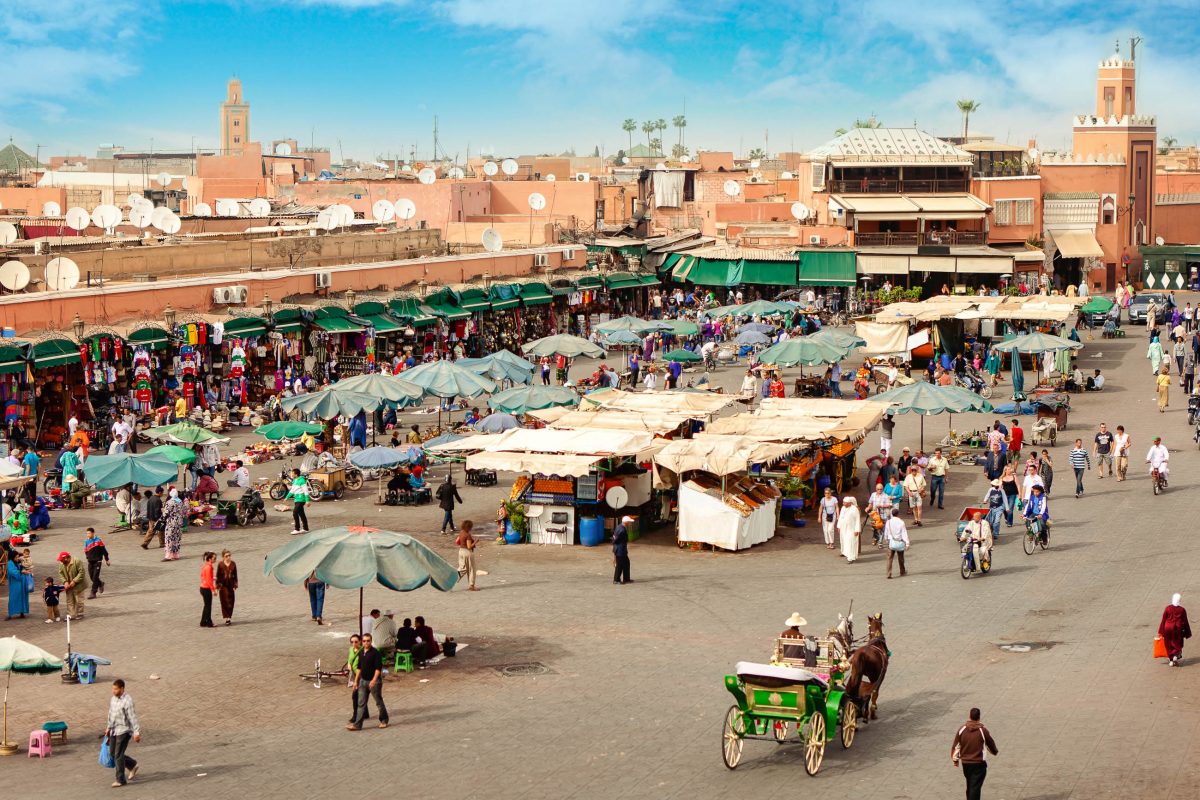
Der Djemaa el-Fna ist der zentrale Platz in der Medina von Marrakesch. Hier spielt sich das wahre Leben der Medina ab – auf touristische Weise gesehen. Tagsüber ist der Djemaa el-Fna bevölkert von allerlei Gauklern, Schlangenbeschwörern und Obstverkäufern.
Am späten Nachmittag werden dann auch Garküchen aufgebaut, die vorzügliche marokkanische Küche zu günstigen Preisen anbieten. Je dunkler es wird, desto mehr Leben entsteht am Djemaa el-Fna. Am Abend geben dann auch noch Musiker und Geschichtenerzähler ihre Künste zum Besten. Am besten sucht ihr euch einen Platz in einem der Cafés oder auf einer der Dachterrassen und verschafft euch einen Überblick über das interessante Chaos.
Tipp. Einige Einheimische bieten sich vielleicht an, von euch Fotos zu machen. Hinterher wird jedoch Geld verlangt, was oft ein Taschengeld weit übersteigt. Falls ihr ein Foto wollt, vereinbart vorher den Preis – oder bleibt sicherheitshalber beim Selfie.
Marrakesch – Stadt der Gärten

Im Norden der Stadt liegt wohl der schönste Garten von Marrakesch, der Jardin Majorelle. Er wurde 1947 von einem französischen Maler angelegt und später von dem bekannten Mode-Designer Yves Saint Laurent erweitert. Hier gibt es Pflanzen von allen fünf Kontinenten der Erde bestaunen.
Weitere Gärten sind der Menara-Garten und der Agdal-Garten, die beide noch aus der Herrscherzeit der Almohaden stammen und zum Weltkulturerbe der UNESCO zählen. Ebenfalls interessant ist der neu angelegte Cyber Park in der Nähe vom Djemaa el-Fna, in dem man unter schattigen Bäumen mittels W-Lan Internet surfen kann.
Arabische Souqs – die Seele von Marrakesch
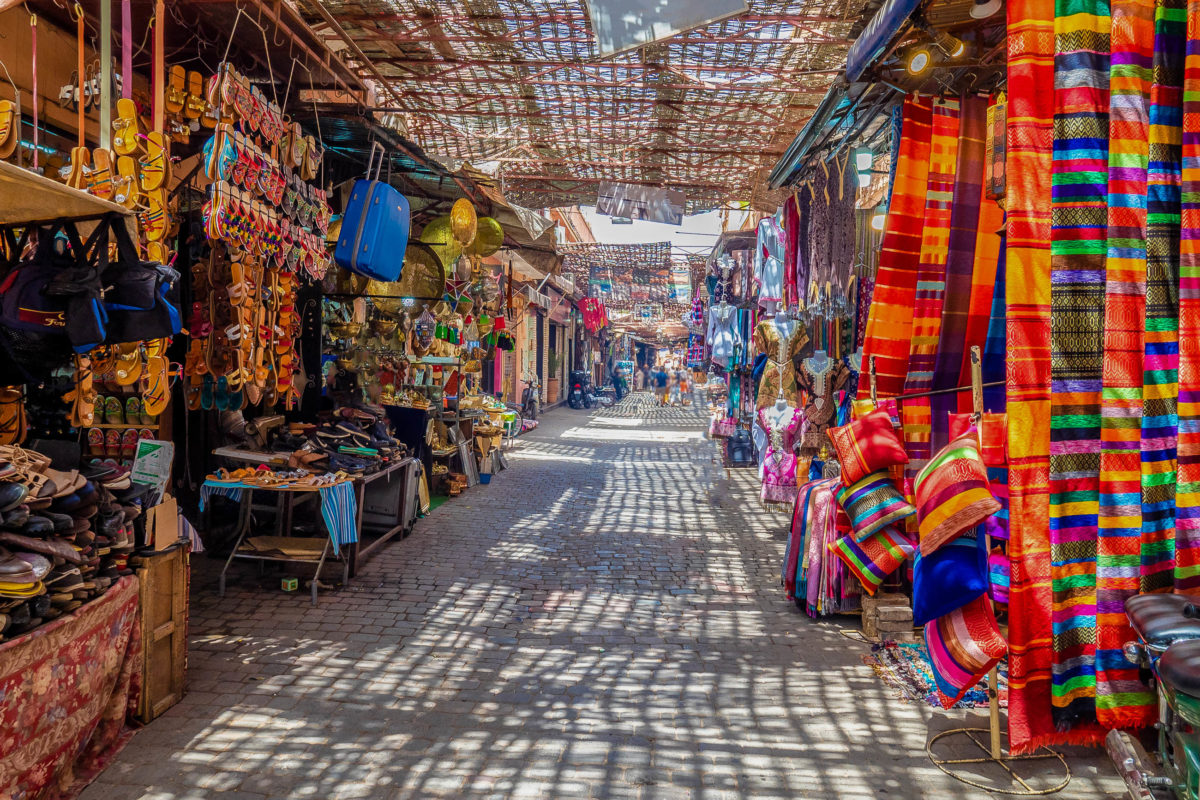
Sind die Gassen von Marrakesch auch noch so verwinkelt, eines kann man bestimmt nicht verfehlen: die Souqs von Marrakesch. Nirgendwo sonst in Marokko sind die Märkte derart weitläufig, vielfältig, farbenfroh und geruchsintensiv. Der Eingang zu den Souqs befindet sich am Platz Djemaa el-Fna. Etwas versteckt hinter einem Café ragt das reich verzierte Hauptportal zu den Märkten von Marrakesch empor.
Die beste Zeit, durch einen Souq zu spazieren, ist der Morgen und der frühe Nachmittag, wenn die geführten Touristengruppen noch beim Frühstück oder beim Mittagessen sitzen. Dann erlebt man die Seele von Marrakesch von ihrer ursprünglichsten Seite.
Fest der Sinne am Souq von Marrakesch
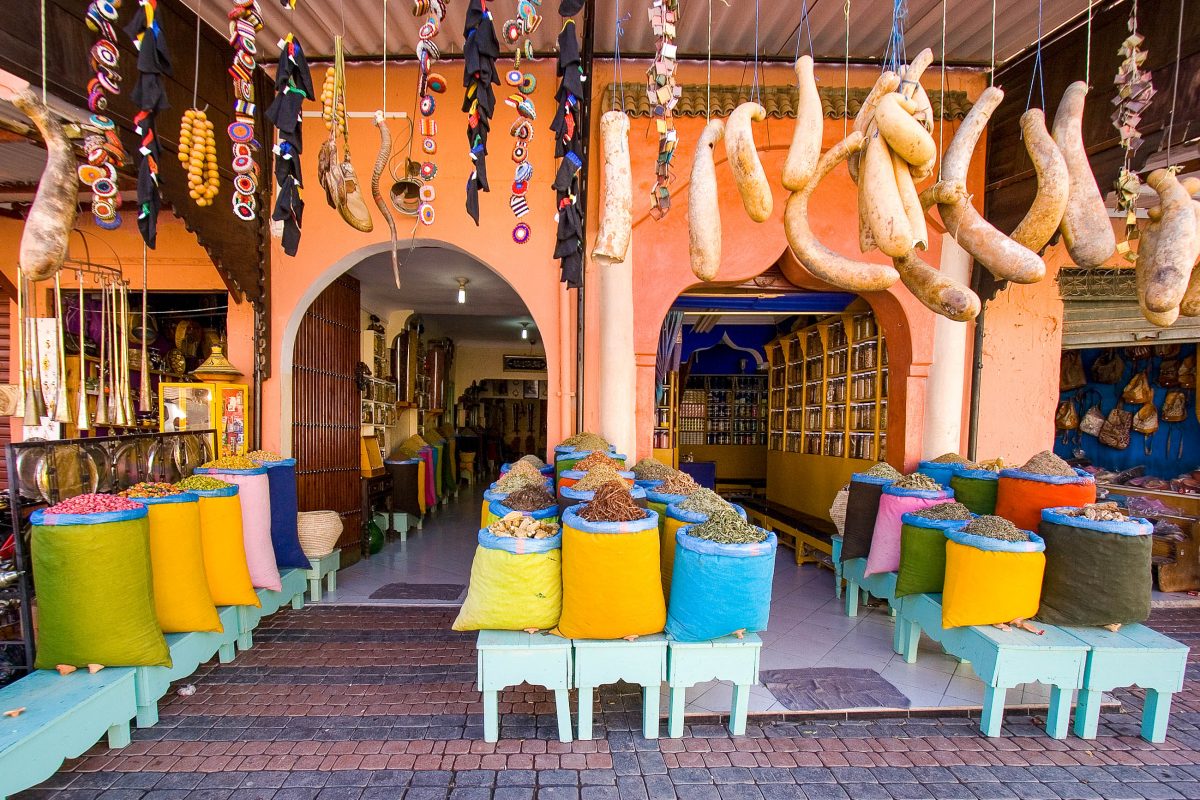
Auf den staunenden Bummler wartet auf den Souqs von Marrakesch ein wahres Fest der Sinne. Tausende Körbe mit Gewürzen in allen erdenklichen Farben, herrlich dekoriertes Obst, feinste Handwerkskunst und das Spiel der Sonnenstrahlen zwischen den unzähligen Dächern zeichnen ein fantastisches Gemälde aus Farben, Düften und Geräuschen.
Die Gasse der Eisen- und Kupferschmiede kann man aufgrund des lauten Hämmerns kaum verfehlen, folgt man den bunten Stoffen, die zwischen den Ständen aufgehängt sind, gelangt man unweigerlich zur Gasse der Färber. Hier sind meist auch die Lederverarbeiter nicht weit, bei denen man handgefertigte Gürtel, Taschen und Schuhe im Direktverkauf erstehen kann.

Noch lauter als bei den Schmieden ist es übrigens nur in der Straße der Teppichverkäufer, die ihre kostbaren Waren lauthals versteigern.
Tipp: Wer in den „normalen“ Kunstmärkten von Marrakesch fürchtet, auf eine Fälschung hereinzufallen, sollte den „Complex d’Artisanat“ besuchen. Er befindet sich in der Nähe des Djemaa el-Fna und bietet nur feinste marokkanische Kunst an. Handeln ist nicht möglich, Kreditkarten aller Art werden angenommen und die Waren werden auf Wunsch in die ganze Welt verschickt. Auch wenn man nichts kaufen möchte, ist ein Rundgang durch diesen fantastischen Kunstmarkt sehr zu empfehlen.
Riad statt Hotel
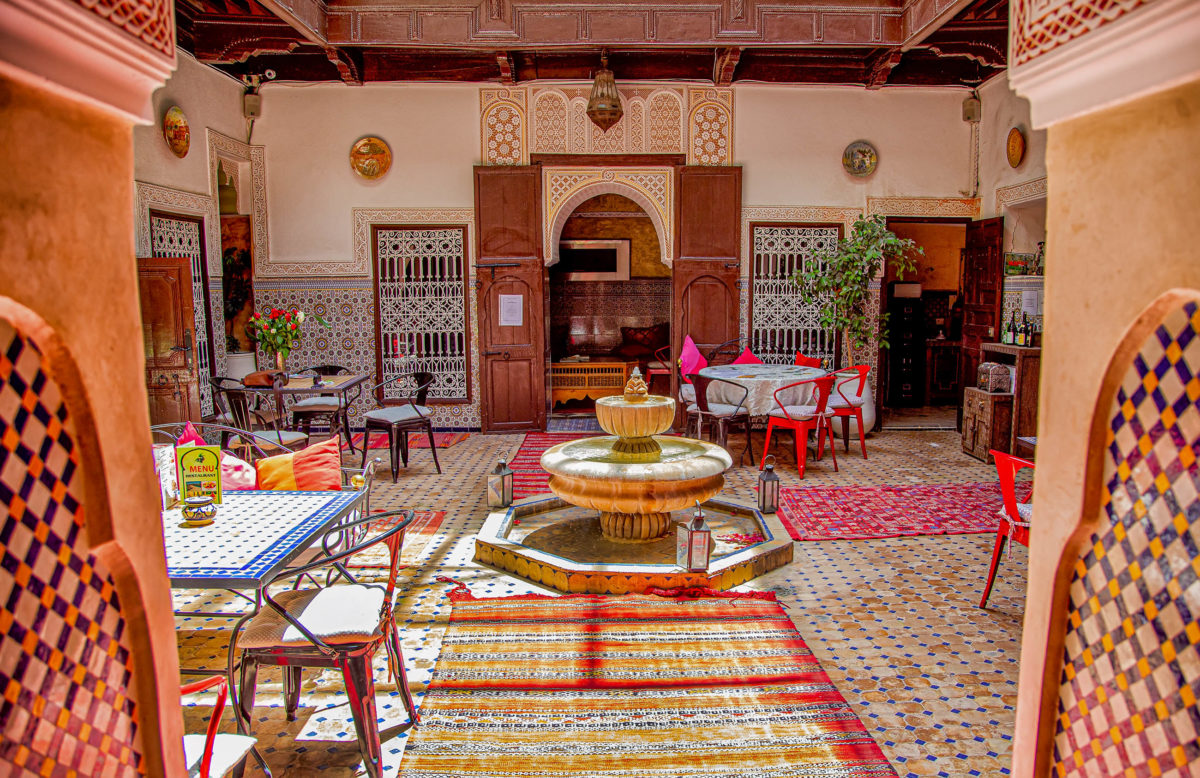
Von mehreren Übernachtungen in Marrakesch sollte wenn möglich auch eine außerhalb des Hotels in einer traditionellen Riad stattfinden. Dies sind marokkanische Häuser im Herzen der Medina. Innerhalb dieser kleinen Stadtwohnungen mit ihren farbenfroh getünchten Zimmern ist es angenehm ruhig, die Geräusche der Straße können völlig ausgesperrt werden.
Die gastfreundlichen Marokkaner sorgen mit diskretem Service und vorzüglichen einheimischen Menüs für orientalisches Feeling pur. Den Märchen aus 1001 Nacht wart ihr garantiert noch nie näher!
Marrakesch richtig erleben
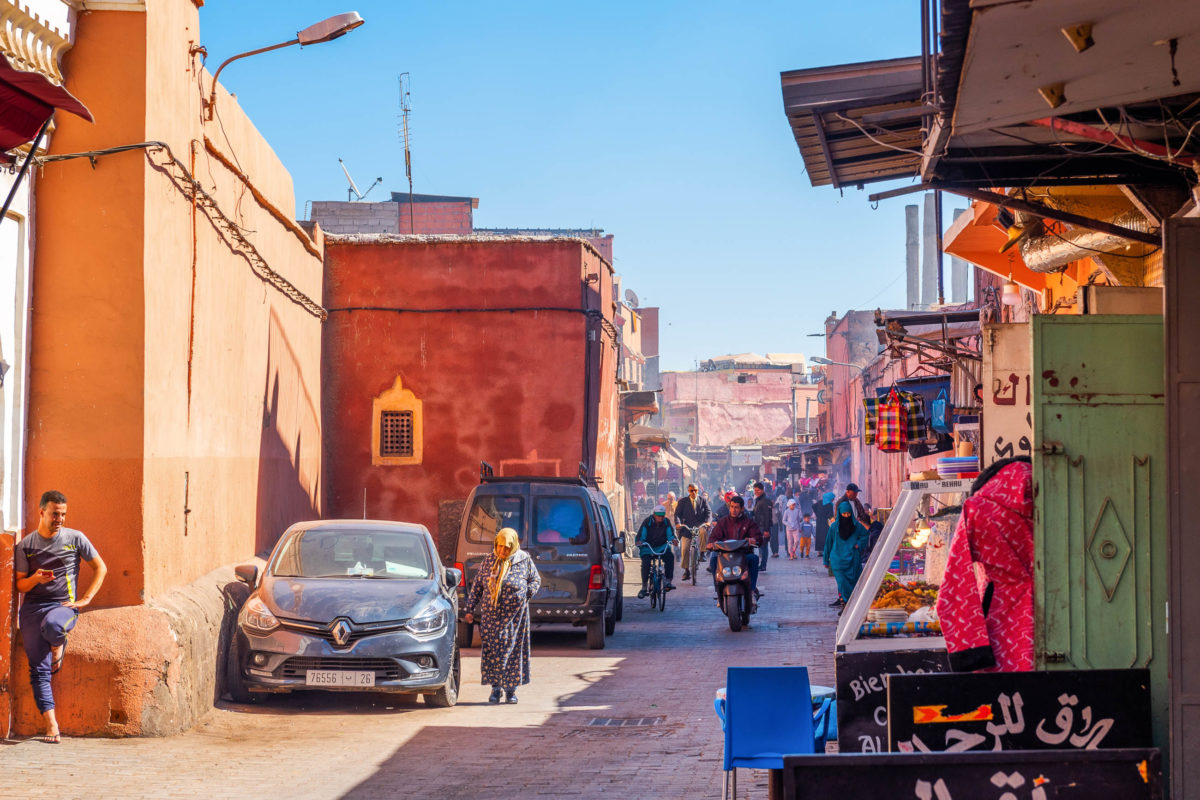
- Die Souks von Marrakesch sollten zweimal besucht werden. Beim ersten Besuch kann man sich getrost vom reichhaltigen Angebot und den vielfältigen Eindrücken überwältigen lassen und sich die Hauptgassen entlang treiben lassen. Beim zweiten Besuch kann man sich dann den Nebengassen mit ihren versteckten Läden und Werkstätten widmen.
- Der Mut, vom allgemeinen Touristenstrom abzuweichen, wird auf das Reichhaltigste belohnt. Oder man lässt sich an einer Ecke einen arabischen Kaffee schmecken und genießt das bunte Treiben um sich herum.
- Der Souq am Bab Ailen ist der Markt der Einheimischen in Marrakesch. Hier kann man in aller Ruhe und ohne touristische Einflüsse inmitten der marokkanischen Bevölkerung durch Fisch-, Fleisch-, Gemüse- und Obststände schlendern und die wahre Erscheinung Marrakeschs ohne Störgeräusche in sich aufsaugen.
- Neben der Medina ist Gueliz der zweite Teil der Innenstadt von Marrakesch. Hier findet man vor allem touristische Einrichtungen wie Hotels, Restaurants und Bars.

